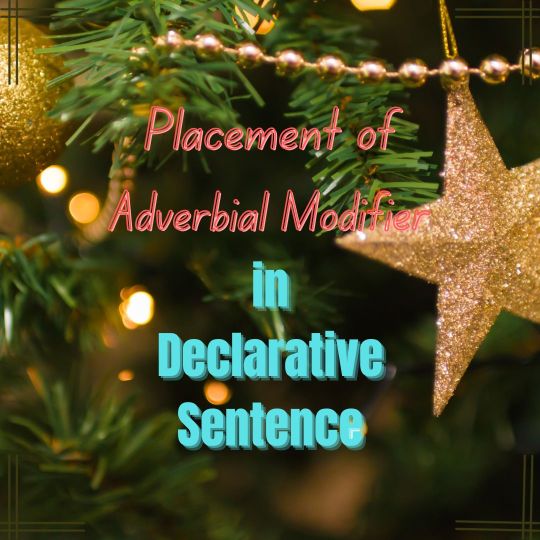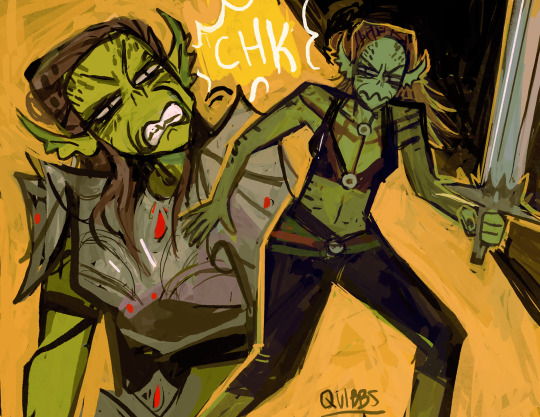#modifier
Text
Body Temperature Fixes & Changes

Download on Mod The Sims
Mirror
simNopke-coldDiseaseFix
simNopke-insideActionsTemperatureChangeFix
simNopke-passedOutAndFrozenSimsFix
simNopke-supernaturalTemperatureCapsFix
simNopke-combustionChanceChanges-no
simNopke-combustionChanceChanges-chance0.1%-threshold85
simNopke-combustionChanceChanges-chance0.1%-threshold99
simNopke-combustionChanceChanges-chance1.1%-threshold85
simNopke-combustionChanceChanges-chance1.1%-threshold99
simNopke-visitorsMayPassOutOrFreeze
simNopke-visitorsMayPassOutOrFreeze-tryLeaveEarlier
353 notes
·
View notes
Text



#bmw#g-series#models#modifier#most wanted#milltek sport#car#cars#fast car#fast cars#luxury#luxurycars
14 notes
·
View notes
Text
Petdepense - Pet DPD Archetype

ID: A 5-stripe flag with its stripes angled downward toward the bottom in a V formation. Coming down from the top-center is an arrow, with the top containing a downwards obtuse triangle with an icon inside. The icon is a pet collar with a bell, colored a dark mulberry pink. The arrow is a medium-dark mulberry pink, and the triangle inside is slightly lighter. The stripes, from top to bottom: Dark brown, dark pink, pink, brown, dark brown.
Depense are labels that describe one's relation to DPD and their dependent identity. It may be a gender experience, orientation experience, or any other identification: even its own category altogether.
Petdepense, or the pet dependent archetype, is a dependent identity related to pets, considering oneself petlike, and/or being seen as a pet. It may feel beloved, loyal, and inhuman / beastlike, but may also have other interpretations.
The modifier symbols are: 🐾🌷
The tulip as a symbol for DPD is representative of how gardens are dependent on their gardeners and often lovingly tended to in turn.
Depense coined by @epikulupu. Also tagging @cupidcoining and @revenant-coining.
#dpdarchive#archive#depense#miscellaneous#modifier#archetype#flags#my work#petdepense#dependent archetype#dependent modifier#pd modifer#dpd modifier#dependent personality disorder#actuallydpd#actuallydependent#img desc
61 notes
·
View notes
Text



Anyway I am bisexual
#rikeikoi#Modifier#Rikei ga Koi ni Ochita no de Shoumei Shite Mita.#science fell in love so I tried to prove it
4 notes
·
View notes
Text
Adverbial Modifier in Declarative Sentence

How to place Adverbial Modifier
The placement of adverbial modifiers in declarative sentences can vary based on their types. Here's a breakdown of the typical order and placement for various types of adverbial modifiers:
Adverbs of Frequency:
Usually, adverbs of frequency appear before the main verb or between the auxiliary and main verb.
Example: She always arrives on time.
Adverbs of Time:
Adverbs of time can appear at the beginning, in the middle, or at the end of a sentence.
Example: Yesterday, she completed her assignment.
She completed her assignment yesterday.
Adverbs of Place:
Adverbs of place can also appear at the beginning, in the middle, or at the end of a sentence.
Example: Here, you will find the information.
You will find the information here.
Adverbs of Manner:
Adverbs of manner usually appear after the verb or at the end of a sentence.
Example: She danced gracefully.
He spoke loudly.
Adverbs of Degree:
Adverbs of degree can appear before the adjective or adverb they modify, or at the end of a sentence.
Example:
He runs very fast.
The movie was too boring.
Adverbial Phrases:
Adverbial phrases can appear at the beginning, in the middle, or at the end of a sentence.
Example:
After the concert, we went for dinner.
We went for dinner after the concert.
Additional Considerations:
In general, adverbs modifying the entire sentence often appear at the beginning or end.
Beginning: Fortunately, the rain stopped.
End: She completed her assignment quickly, fortunately.
When there are multiple adverbial modifiers, the order is flexible and depends on the emphasis or importance of each modifier.
Example: He spoke confidently and convincingly during the presentation.
Priority of Adverb Placement:
When dealing with multiple types of adverbial modifiers in a sentence, there isn't a strict rule governing the priority of placement.
However, there are some general guidelines and common practices.
The placement may depend on the emphasis you want to give to a particular modifier or the logical flow of the information. Here's a general guideline:
Adverbs of Frequency and Time:
These adverbs often come early in the sentence.
Example: Every morning, she quickly finishes her work.
Adverbs of Place:
Adverbs of place can come after adverbs of time or frequency.
Example: Every morning at the park, she quickly finishes her work.
Adverbs of Manner:
Adverbs of manner can come after the subject or at the end of the sentence.
Example: Every morning at the park, she finishes her work quickly and efficiently.
Adverbs of Degree:
Adverbs of degree typically precede the adjective or adverb they modify.
Example: Every morning at the park, she finishes her work very quickly and efficiently.
Adverbial Phrases:
Adverbial phrases can be placed at the beginning, in the middle, or at the end of the sentence, depending on the context and emphasis.
Example: Very quickly and efficiently, she finishes her work every morning at the park.
Ultimately, the priority of placement for multiple types of adverbial modifiers depends on the writer's intent, the flow of information, and the emphasis on specific details.
Adverbial Modifier in Declarative Sentence
Direct/Indirect Objects in Declarative Sentence
Declarative Sentence in English Grammar
Independent Elements
What is Adverbial Modifier of a Sentence
What is The Object of a Sentence?
Read the full article
#adverbial#adverbialphrases#adverbsofdegree#adverbsoffrequency#adverbsofmanner#adverbsofplace#adverbsoftime#atthebeginning#attheend#declarative#inthemiddle#modifier#sentence#syntax
0 notes
Text

OUT OF YOUR FRIENDS WICH ARE YOU
+ version with my agents bcs i can

#sy.op#sy.png#splatoon#splatoon 3#side order#agent 3#captain 3#neo agent 3#agent 4#agent 8#acht let 8 take their glasses for the picture#oh yea also my headcannon is thats 4 on top of the tower in the poster#edit: also modified some of the screentones bcs it was bothering me#is it weird to modify a meme redraw after it took of..#edit sorry i changed it for the 3rd time i will do it again#slash jay hopefully
4K notes
·
View notes
Text
"kill them with kindness" correct. 12 billion hearts attack

7K notes
·
View notes
Text
Fiber arts is just Math in sheep's clothing
#the angles were off on the armsceyes of the shirt im modifying#aaah#sewing#knitting#crochet#knit#fiber arts#weaving#fiber art
5K notes
·
View notes
Text

basil braids.
ya'll think i could put this on my linkedin? the braids in a claw clip some of you have been "foaming at the mouth" for 😼



24 ea + 7 modmax swatches
bgc, lods, hat compatible, proper maps, etc
claw clip accessory in L lip ring, 16 swatches
pretty proud of the morphs on this one!
download | alt


v1 polycount: 12.1k / 7.3k / 3.6k / 1.8k
v2 polycount: 16.9k / 10.1k / 5.1k / 2.5k
credits: depthofpixels’ gradient, qwertysims’ actions, simandy’s gradients, aveirasims’ gradients, aharris00britney’s gradients
does clip with bulky clothing, dramatic head turns & the masc frame, but those are all expected of longer hairs 😝
december 14, 2023 update
corrected a specular map issue on v2 causing white spots around the hairline
#ts4#sims 4#ts4cc#s4cc#s4mm#ts4mm#s4hair#simblr#modified maxis#alwaysfreecc#download#she's highpoly but i think its worth it :)#i made the parts & claw clip myself 💁🏾♂️#no ombre accessory didn't like how the uv was looking 😜#but i'm also sick of this hair because why did i get a death threat over it 😑#anyways enjoy :) & lmk if there's any issues~~
5K notes
·
View notes
Text

i love whatever is so wrong with her
#lae'zel#bg3#baldurs gate#baldurs gate 3#please don't fix whats wrong with her#(looking directly at the patch updates that modify how weird she is) please don't#my art
6K notes
·
View notes
Text
Restricted Job Offers

Download on Mod The Sims
Mirror
simNopke-restrictedJobOffers-core
simNopke-restrictedJobOffers-core-jobRejectionMod
simNopke-restrictedJobOffers-numberConfig-shortage
simNopke-restrictedJobOffers-numberConfig-equal
simNopke-restrictedJobOffers-numberConfig-around3
simNopke-restrictedJobOffers-numberConfig-always5
simNopke-restrictedJobOffers-levelConfig-equal
simNopke-restrictedJobOffers-levelConfig-mostlyLow
simNopke-restrictedJobOffers-levelConfig-unrestricted
171 notes
·
View notes
Text



#bmw#g-series#models#modifier#most wanted#milltek sport#car#cars#fast car#fast cars#luxury#luxurycars
8 notes
·
View notes
Text
Yandepense - Yandere DPD Archetype

no id provided for spoons' sake, if someone else has time I will add any that are made
Depense are labels that describe one's relation to DPD and their dependent identity. It may be a gender experience, orientation experience, or any other identification: even its own category altogether.
Yandepense, or the yandere dependent archetype, is a dependent identity related to yanderes, considering oneself yanderelike, and/or being seen as a yandere.
The modifier symbols are: ❤️🩹🌷
The tulip as a symbol for DPD is representative of how gardens are dependent on their gardeners and often lovingly tended to in turn.
Depense coined by @epikulupu. Also tagging @cupidcoining and @revenant-coining.
#yandere cw#yandepense#dpdarchive#archive#depense#modifier#archetype#miscellaneous#flags#pd modifier#dpd#dependent personality disorder#actuallydpd#actuallydependent#no id
54 notes
·
View notes
Text
"QUI AIME BIEN CHATIE BIEN" et ses conséquences?
L’expression “qui aime bien châtie bien” est un proverbe qui signifie que l’on peut critiquer ou corriger quelqu’un de manière dure, voire punitive, si l’on se soucie réellement de son bien-être et de sa progression.
Photo de cottonbro studio sur Pexels.com
Le proverbe implique qu’il est possible d’exprimer des critiques ou des réprimandes à une personne tout en étant bienveillant envers elle.…

View On WordPress
#aide#apaisement#échange#émotions#bénéfique#bien-être#communication#comportement#confiance#modifier#moral#soutien#subtil#temps#vie
1 note
·
View note
Text
What is the Attribute of a Sentence?

The Attribute in English Grammar
In English grammar, an Attribute is a word, phrase, or clause that provides additional information about a noun or pronoun in a sentence.
Attributes are modifiers that help describe or characterize the noun or pronoun by answering questions such as what, what kind of, whose, which, how much, and how many.
Attributes are essential for adding detail and specificity to language, allowing speakers and writers to convey more precise meanings.
Here are some key points about attributes:
Types of Attributes:
Adjective Attributes(attributive adjective)
These are single adjectives or adjective phrases that modify a noun.
Example: a beautiful flower
Noun Attributes:
These are nouns or noun phrases that modify another noun.
Example: a bookstore owner
Prepositional Phrase Attributes:
These are prepositional phrases that modify a noun.
Example: a house with a red roof
Numeral Attributes:
Numerals that quantify or specify the number of nouns.
Example: three cats, the second chapter, many friends
Possessive Attributes:
Attributes that indicate possession or ownership.
Example: his car, my house, their ideas
Demonstrative Attributes:
Attributes that point to or identify a particular noun.
Example: this book, those flowers, such situations
Quantifier Attributes:
Words that express quantity or extent.
Example: some friends, all students, no time
Interrogative Attributes:
Words used to form questions, often modifying nouns.
Example: which book, what idea, whose laptop
Relative Clauses (Adjective Clauses):
Clauses that modify nouns and usually begin with a relative pronoun (e.g., who, which, that).
Example: The man who is wearing a hat is my neighbor.
Placement of Attributes:
Attributes can appear before or after the noun they modify.
The green grass (before)
The grass with a fresh scent (after)
Function of Attributes:
Attributes help provide more information, clarify meaning, and paint a more detailed picture of the subject in a sentence.
Use with Pronouns:
While attributive adjectives (attributes) directly modifying pronouns are not as common as with nouns, they can still be used to add detail or context.
Additionally, attributive phrases or clauses are often employed with pronouns for more elaborate descriptions.
Attributive Adjective with Pronouns:
Example: She found an interesting book, and she read it eagerly.
In this case, interesting is an attributive adjective modifying the pronoun it, providing more information about the type of book.
Attributive Phrase with Pronouns:
Example: I met someone with a fascinating story to tell.
Here, the prepositional phrase with a fascinating story to tell acts as an attributive phrase, providing more information about the pronoun someone.
Attributive Clause with Pronouns:
Example: Someone who wore a red dress caught everyone's attention.
The relative clause who wore a red dress functions as an attributive clause, modifying the pronoun someone and offering specific details about her.
Diverse Expressions of Attributes
in Language:
Attribute can be expressed by an adjective, the participle, the participle clause, a numeral, a pronoun, a noun in the common case without preposition, a noun in the possessive case, a noun with preposition, the infinitive, the gerund with a preposition
Adjective:
Adjectives directly modify nouns and answer questions like what kind of?
They can be single words or phrases.
Example: a happy person
Participle:
Participles are verb forms used as adjectives. They can be present or past participles.
Example: a person eating lunch, a broken cup
Participle Clause:
Participle clauses provide additional information about a noun.
They often start with a present or past participle.
Example: a person, who is smiling, in the photograph
Numeral:
Numerals are used to express attributes related to quantity or order.
Example: a book with three chapters
Pronoun:
Pronouns can act as attributes, providing information about the noun.
Example: some friends, my pen
Noun in Common Case without Preposition:
A noun in the common case (or subjective case) directly modifies another noun.
Example: a cat owner
Noun in Possessive Case:
A noun in the possessive case can function as an attribute.
It adds information by specifying the possession or relationship.
Example: The student's project was outstanding.
Noun with Preposition:
A prepositional phrase with a noun provides additional information about the main noun.
Example: a student with a talent for music
Infinitive:
An infinitive can act as an attribute, expressing purpose or intent.
Example: a plan to visit the museum
Gerund with Preposition:
A gerund, a verb form ending in -ing, can be used with a preposition to act as an attribute.
Example: a person of doing his best in art
Attribute-a Noun in Opposition
A noun in apposition is a specific type of attribute where a noun or a noun phrase is placed next to another noun to provide additional information about it.
This construction is often used for clarification or emphasis.
In the example:
London, the capital of England, is a very old city-The capital of England is a noun in apposition, adding detail to the noun London.
It's a way to identify and describe London more specifically within the sentence.
Placement of Attributes:
In English grammar, the placement of attributes is flexible, but there are general rules that guide their position in relation to the noun they modify.
1.When the defining noun word is expressed by an adjective the attribute usually comes before the noun:
Examples:
the blue sky
a large dog
an interesting book
2.When the defining noun word is expressed by a participle, the attribute usually comes before the noun.
This structure is often seen in complex noun phrases.
Here are examples:
Participle as Defining Word:
the broken window
a shining star
the fallen leaves
Defining Word with Participle in a Phrase:
If the defining noun word is the participle in a phrase then the attribute comes after the noun:
a table with a cracked surface
the girl with a sparkling personality
a story with a twisted ending
3.When the defining noun word is a numeral, the attribute typically comes before the noun. Here are some examples:
Cardinal Numbers:
two cars
five books
ten students
Ordinal Numbers:
the first chapter
the third row
her second attempt
4.When the defining noun word is a pronoun, the attribute typically comes before the noun. Here are examples:
Possessive Pronouns:
his big house
our favorite restaurant
my old car
Demonstrative Pronouns:
this beautiful flower
that interesting book
these colorful paintings
5.When the defining noun word is a combination of two adjectives, the attribute typically comes before the noun.
Here are examples:
Two Adjectives Modifying a Noun:
a beautiful, sunny day
an old, wooden chair
a fast, red car
How to place adjectives (attributive)
in relation to Nouns:
When a noun is modified by two adjectives, the typical order is to place the adjectives in a specific sequence.
This sequence is often referred to as the OSASCOMP rule, which stands for:
Opinion:
Adjectives expressing opinions or judgments (e.g., beautiful, interesting).
Size:
Adjectives indicating size (e.g., small, large).
Age:
Adjectives denoting age (e.g., old, new).
Shape:
Adjectives describing shape (e.g., round, square).
Color:
Adjectives representing color (e.g., red, blue).
Origin:
Adjectives indicating origin or nationality (e.g., American, French).
Material:
Adjectives specifying material (e.g., wooden, metal).
Purpose:
Adjectives expressing purpose or qualifier (e.g., cooking, running).
For example: a beautiful small house-
beautiful falls under the category of opinion, small indicates size.
Therefore, beautiful comes before small in this sequence.
6.When the defining noun word is a noun in the common case without a preposition, the attribute the typically comes before the noun.
Here are examples:
Common Noun without Preposition:
a blue sky
a happy family
an interesting story
7.When the defining noun word is a noun in the possessive case, the attribute still typically comes before the noun.
Here are examples:
Possessive Case Noun:
the professor's expertise
the company's innovation
my friend's advice
8.When the defining noun word is a participle clause, the attribute (or adjectival phrase) typically comes after the noun.
Here are examples:
Participle Clause as Defining Word:
The girl, holding a bouquet of flowers, smiled.
The book, written by a famous author, became a bestseller.
The car, parked near the entrance, had a flat tire.
9.When the defining noun word is a noun with a preposition, the attribute usually comes after the noun.
Here are examples:
Noun with Preposition:
a book on the shelf
a cat under the table
a painting of a landscape
10.When the defining noun word is an infinitive, the attribute usually comes after the noun.
Here are examples:
Infinitive as Defining Word:
a desire to travel the world
an opportunity to learn a new skill
a decision to pursue higher education
11.When the defining noun word is a gerund with a preposition, the attribute typically comes after the noun.
Here are examples:
Gerund with Preposition:
The team discussed the project before starting the presentation.
She had no intention of coming back.
He is passionate about a career in designing sustainable buildings.
What is the Attribute?
What is The Object of a Sentence?
Subject-Verb Agreement in English
What is a predicate? Predicate Types
Read the full article
#anouninopposition#adjectivesplacementrelatingtonoun#afternoun#attribute#attributiveadjective#beforenoun#diverseexpressions#function#grammar#howmany?#howmuch?#modifier#noun#nounattribute#ofattributes#osascomp#placementattribute#pronoun#syntax#types#usewithpronouns#what#whatkindof?
1 note
·
View note
